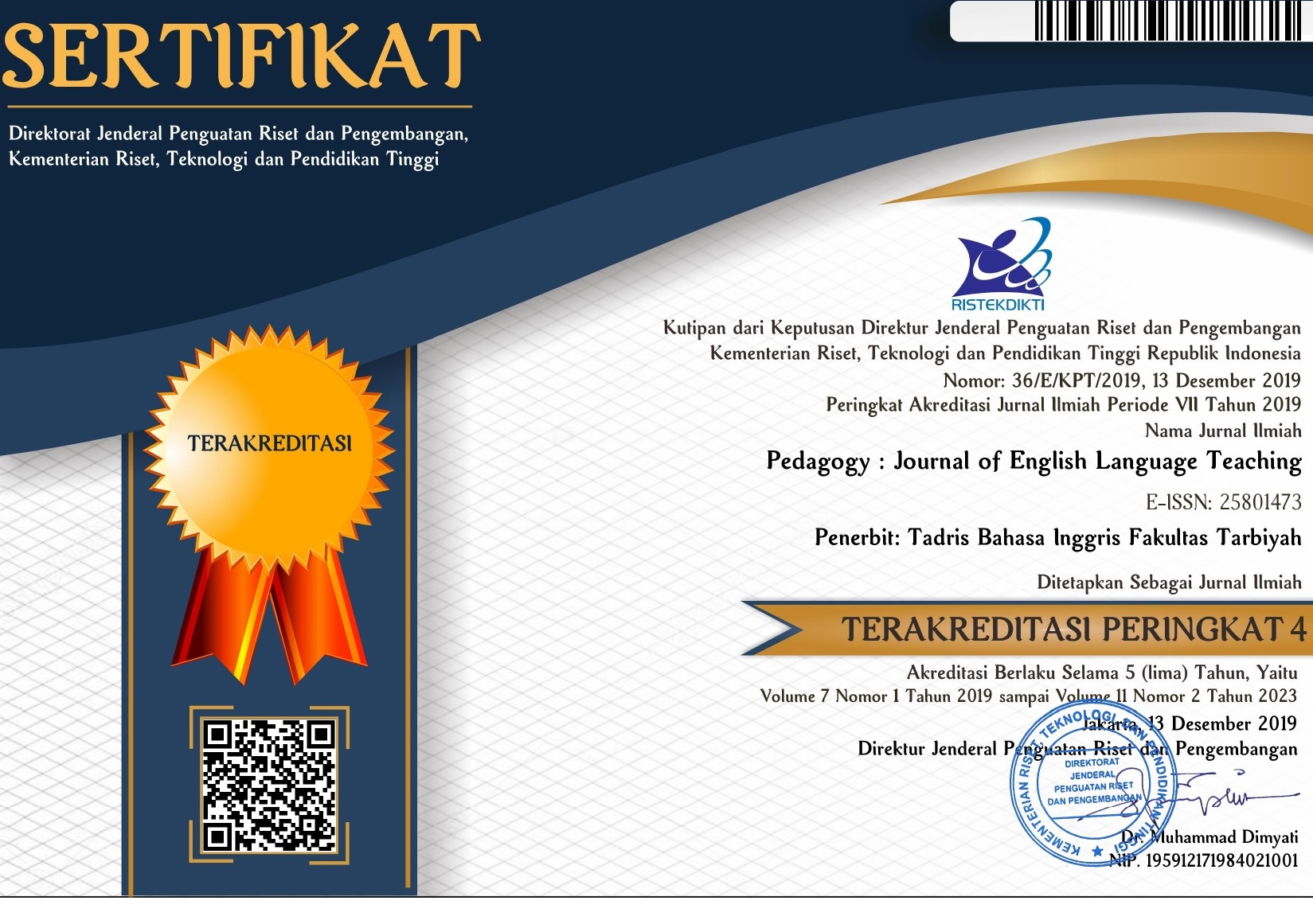A Survey on Translation as a Learning Strategy by EFL Higher Education Students in English Learning
DOI:
https://doi.org/10.32332/joelt.v10i2.4809Keywords:
EFL, language learning, learning strategy, translation, translation as a learning strategyAbstract
Many language teachers assume that the use of translation as a learning strategy to learn a language can harm the learning processes. In contrast, many learners need translation as a learning strategy to help them understand the meanings of texts. This paper reports on the use of translation strategies in English learning by EFL higher education students at an Islamic private university. This study employed a survey study. Data were collected from the Inventory for Translation as a Learning Strategy (ITLS) questionnaire consisting of 27 items that were adapted from Liao (2002). The participants were 97 students who enrolled in the English Education major batch of 2018 and they were randomly selected. Findings show that the most frequent strategy use of translation is the use of electronic machines and English-Indonesia and Indonesian-English dictionaries (M=4.15 and SD= 0.91). Meanwhile, the least frequent strategy use of translation is to ask questions to peers and seek to find the meaning of idioms and expressions collectively in searching for unknown or new information about the English language (M=2.63 and SD=1.14).
















